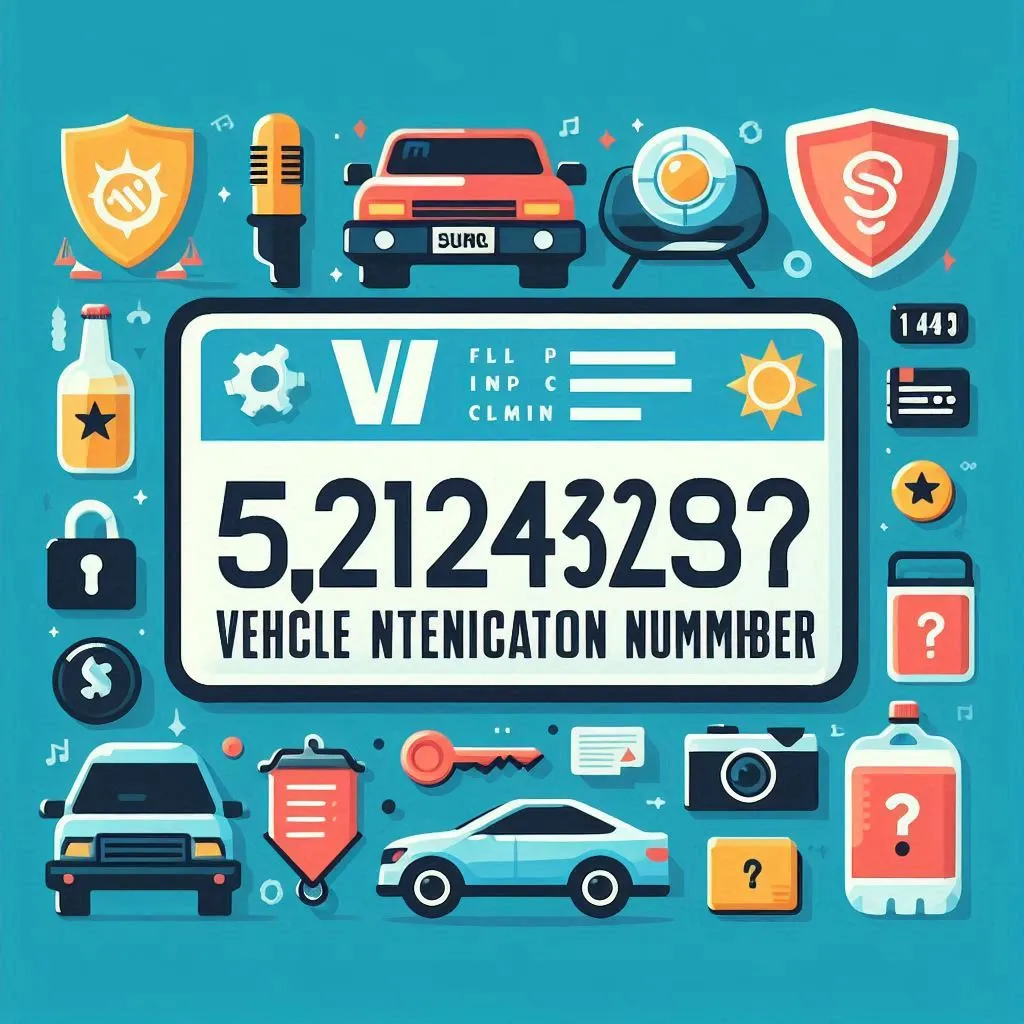Every vehicle on the road has a unique identifier known as the Vehicle Identification Number (VIN). This 17-character string of letters and numbers serves as a fingerprint for your car, providing crucial information about its make, model, engine, and more. Understanding your vehicle’s VIN can offer valuable insights into its history, specifications, and even potential issues. In this article, we’ll delve into the secrets of the VIN, exploring its structure, significance, and how you can decode it to unlock a wealth of information about your vehicle.
What is a vehicle identification number (VIN)?
A VIN is a unique alphanumeric code assigned to every motor vehicle when it’s manufactured. This code is used to identify the vehicle and track its history throughout its lifecycle. The VIN is typically located on the driver’s side dashboard, visible through the windshield, or inside the driver’s side door frame.
The Structure of a VIN
A VIN is composed of 17 characters, each representing different aspects of the vehicle. The structure is standardized by the International Organization for Standardization (ISO) and can be broken down into three main sections:
- World Manufacturer Identifier (WMI)
- Vehicle Descriptor Section (VDS)
- Vehicle Identifier Section (VIS)
1. World Manufacturer Identifier (WMI)
The first three characters of the VIN make up the WMI, which identifies the manufacturer and the country of origin. Here’s what these characters represent:
- First Character: Denotes the country of manufacture. For example, ‘1’, ‘4’, and ‘5’ represent the United States, while ‘J’ indicates Japan.
- Second Character: Identifies the manufacturer or the division of the manufacturer. For example, ‘H’ could denote Honda, and ‘T’ could represent Toyota.
- Third Character: Provides information about the vehicle type or manufacturing division. This can indicate the vehicle’s model or type of vehicle.
2. Vehicle Descriptor Section (VDS)
The VDS, which includes characters four through nine, offers detailed information about the vehicle’s model, body style, engine type, and safety features:
- Fourth to Eighth Characters: These characters describe the vehicle’s model, body type, engine type, and other key features.
- Ninth Character: This is a check digit used to verify the validity of the VIN. It is calculated through a specific algorithm and helps detect any errors in the VIN.
3. Vehicle Identifier Section (VIS)
The VIS, comprising characters ten through seventeen, provides information specific to the individual vehicle:
- Tenth Character: Indicates the model year. For example, ‘A’ corresponds to 1980, ‘B’ to 1981, and so on. Letters like ‘Y’ represent newer years.
- Eleventh Character: Represents the manufacturing plant where the vehicle was assembled.
- Twelfth to Seventeenth Characters: These characters form the serial number, which is unique to each vehicle.

Decoding Your VIN
To decode your VIN and gain insights about your vehicle, you can use online VIN decoder tools or contact the manufacturer. Here’s how you can interpret each section:
- WMI: Identify the country of manufacture and the manufacturer’s name.
- VDS: Determine the vehicle’s model, engine type, and features.
- VIS: Find out the model year, assembly plant, and unique serial number.
Example VIN Decoding
Let’s break down an example VIN: 1HGCM82633A123456.
- 1HG: Manufacturer is Honda, and the vehicle is made in the United States.
- CM826: The Model is an Accord with a specific body style and engine type.
- 3: Check digit for validation.
- 3: Model year 2003.
- A: Assembled in the Marysville, Ohio plant.
- 123456: Unique serial number for this specific vehicle.
The Importance of VINs
- Vehicle History Reports
VINs are crucial for obtaining vehicle history reports, which provide information on past accidents, title status, and odometer readings. This is especially important when buying a used car, as it helps you avoid vehicles with hidden issues.
- Recalls and Repairs
Manufacturers use VINs to track and notify vehicle owners about recalls. If your vehicle is part of a recall, you can use the VIN to check for any necessary repairs or updates.
- Insurance and Registration
Insurance companies and registration authorities use VINs to verify the vehicle’s identity and ensure that the correct details are recorded. This helps in determining insurance premiums and maintaining accurate records.
- Theft Prevention
VINs play a vital role in preventing vehicle theft. Law enforcement agencies use VINs to track stolen vehicles and return them to their rightful owners.
How to Use VIN Information
- Check Vehicle History
Before purchasing a used vehicle, obtain a vehicle history report using the VIN. This will provide a detailed history of the vehicle, including previous ownership, accident reports, and any title issues.
- Verify Authenticity
Ensure the VIN on the vehicle matches the VIN on the title and registration documents. This helps verify the vehicle’s authenticity and confirms it hasn’t been tampered with.
- Explore Manufacturer Resources
Use the VIN to access manufacturer resources, such as service manuals, recalls, and parts specifications. This can help you understand your vehicle better and perform maintenance or repairs more effectively.
- Stay Informed
Regularly check for any recalls or updates related to your vehicle using the VIN. Manufacturers may issue recalls or service bulletins that could affect your vehicle’s safety or performance.
Common VIN Myths and Misconceptions
- VINs Are Only for New Cars
VINs are not exclusive to new cars; they are assigned to vehicles of all ages. Whether you have a classic car or a brand-new model, the VIN provides essential information about the vehicle.
- All VINs Are the Same
Each VIN is unique, and no two vehicles will have the same VIN. This uniqueness is crucial for identifying and tracking individual vehicles.
- VINs Can Be Easily Changed
Changing a VIN is illegal and often associated with vehicle theft or fraud. Law enforcement agencies and manufacturers closely monitor VINs to prevent illegal alterations.
Conclusion
Understanding your vehicle’s VIN is more than just a way to decode a string of letters and numbers—it’s a gateway to a wealth of information about your car’s history, specifications, and more. By familiarizing yourself with the structure and significance of the VIN, you can make informed decisions about vehicle purchases, maintenance, and safety. Whether you’re buying a used car or simply curious about your current vehicle, unlocking the secrets of your VIN can provide valuable insights and peace of mind.
If you have any further questions or need assistance with your vehicle’s VIN, don’t hesitate to reach out to your vehicle manufacturer or use online resources for detailed information.
